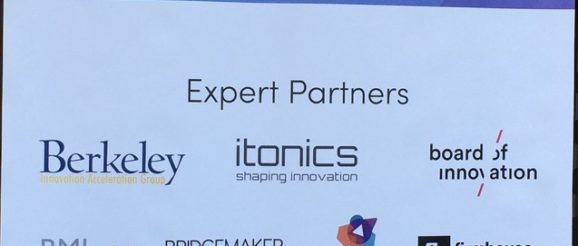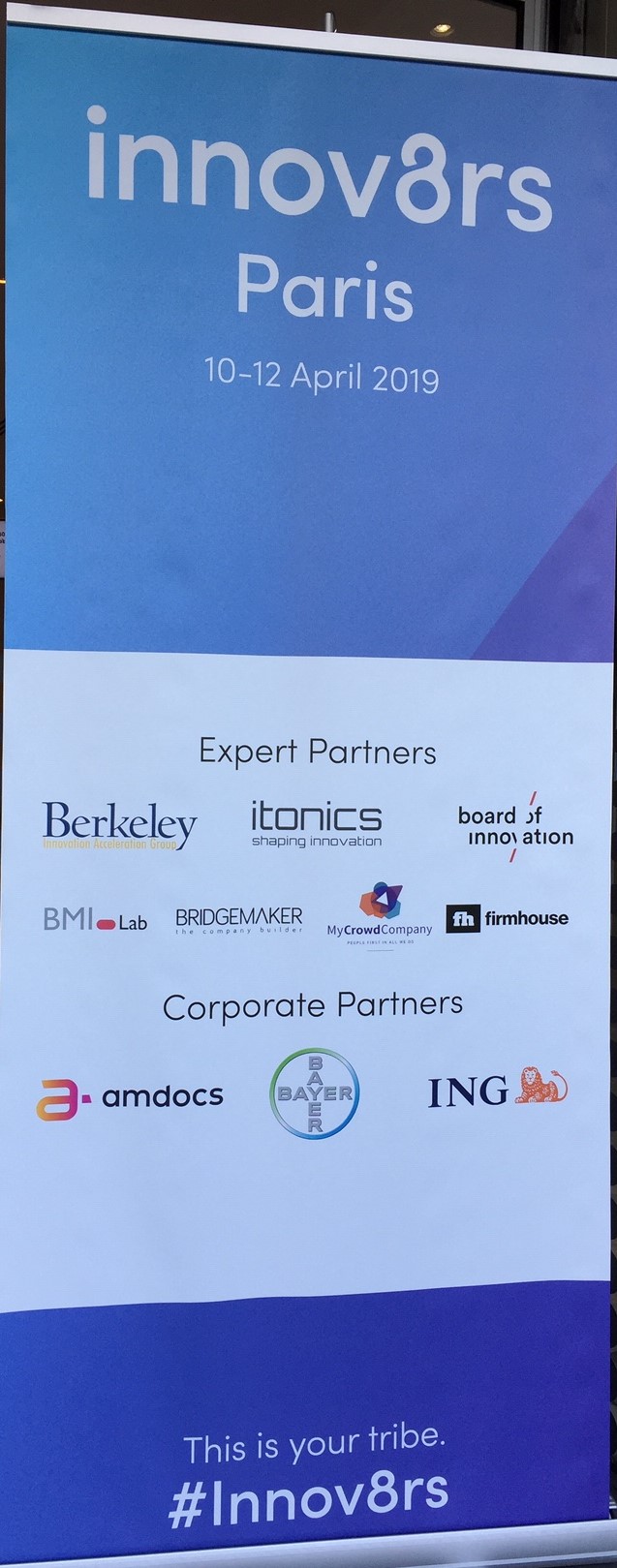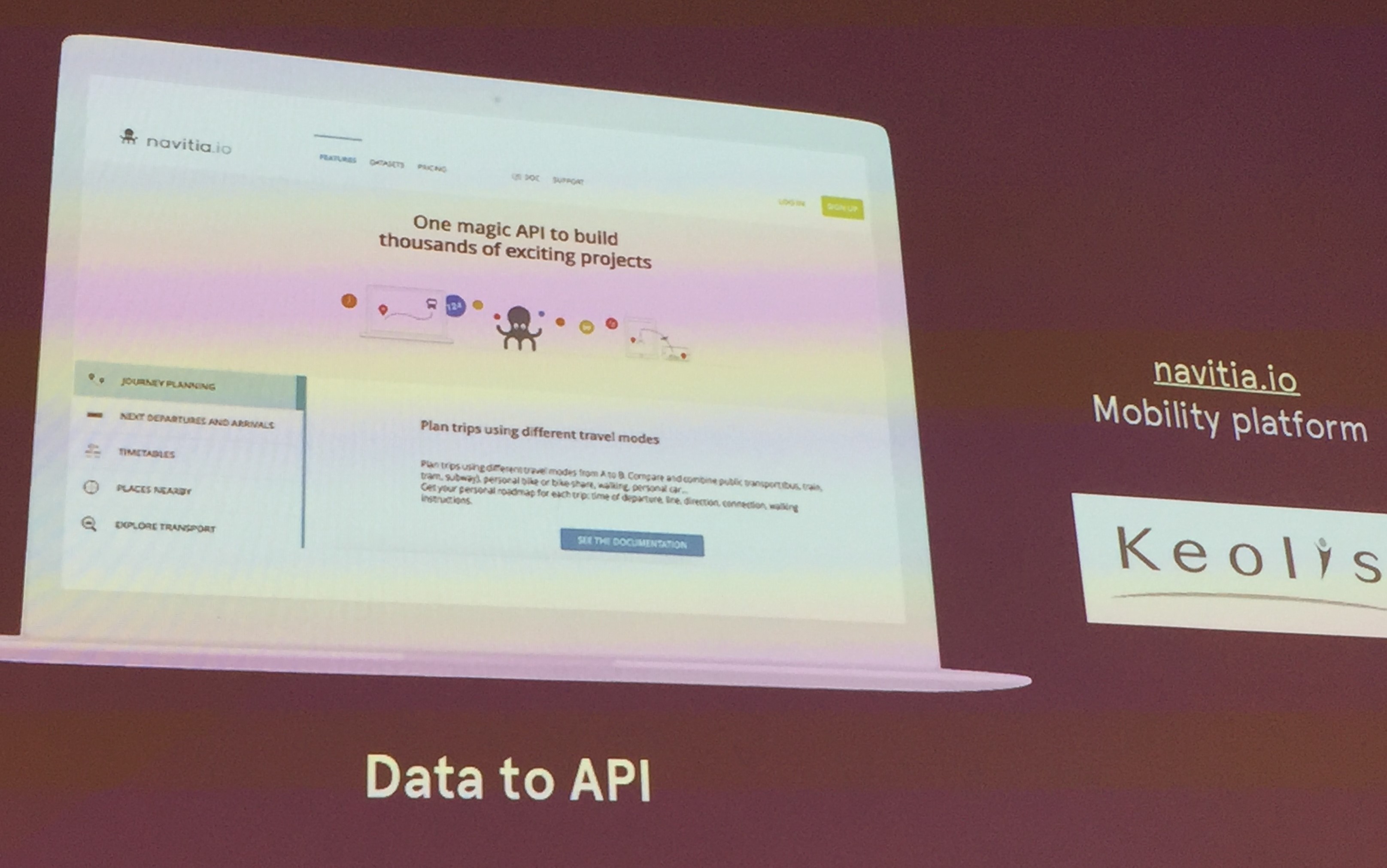Turning your corporate assets in new ventures – Innovation Excellence

 I recently attended at Innov8rs conference an enticing presentation on business model
I recently attended at Innov8rs conference an enticing presentation on business model
innovation: “Turning your corporate assets in new ventures and opportunities”.
It was
delivered by enthusiastic Chloé Bonnet and Pauline Pham, respectively Founding partner and CEO, and Partner & VP, at Five by Five . They kindly accepted to go into more details into its creative approach.
1) Hi, could tell us about Five by Five activities, and value proposition?
Pauline: Hi, of course. Five by Five is an innovation company, born in the French startup ecosystem. We help large companies to transform their unexplored potential and underutilised assets (such as datasets, knowhow, infrastructures, talents) into new business opportunities. If you are wondering how that translates concretely, we support companies in creating new markets, developing adjacent innovations or even optimising their existing products – in essence, diversifying their revenue stream and activities .
Chloé: We have historically worked on a wide range of subjects, but we do have some favourites: on the one hand, helping companies launch new businesses or services by exploring together potential opportunities (including adjacent innovations) and providing them support until they are brought to market; on the other hand, advising companies looking to better align their innovation strategy with their mission or purpose, including by helping them reorganise their operating model or talents (for instance, through intrapreneurship programs).
We also pride ourselves on the breadth of clients we have had the chance to work with, be they French or international, such as SNCF, MAIF, PSA, Groupama, The World Bank.
2) Five by Five claim is a powerful one: “The businesses of tomorrow already exist within yours”. It’s about transforming unexplored potential into new business opportunities, leveraging untapped assets, and developing adjacent innovation. Has it always been at the heart of your value proposition, the reason why Five by Five was created, or is it a service offering that emerged along the way, based on your experience, and practices?
Chloé: I have always fervently advocated that large companies already have internally the resources they need to be successful in the next era. In fact, I co-founded Five by Five, because I disagreed with much of the way innovation was being promoted.
By focusing first on existing resources, it is possible to iterate more effectively and quickly, increasing greatly the chances of success’ of the new solution or product launched.
It would be fair to say that we have refined our approach and methodology over the years, as we have learned a great deal, both by working alongside our clients and from them. More than anything else, we have widened our perspective as to how we can help our clients. We have begun helping our clients to implement intrapreneurship programs to promote upskilling internally, and we have moved away from considering tangible assets (such as data or talents) the only way to launch adjacent businesses to greater experimentation (through our venture studio). Finally, we have been trying to play a continuous role in teaching our knowledge, and evangelising our convictions on the topic of innovation with our clients.
3) Would you share a few examples of adjacent innovations?
Chloé: I could cite many examples of adjacent innovations we’ve helped uncover, but today I will focus on three particularly striking ones.


4) Five by Five presents 4 stages to unfold adjacent innovations: Discover, Design, Decide, and Deploy / Prototype and Test? Would you say a few words about the activities and deliverables at each stage?
Pauline: The process you just described is key to our approach and success in unfolding
adjacent innovations by building clarity throughout the journey.
In the “Discover” phase, we seek to define the client’s business goals, their customers’
problems and needs, identify their existing resources, and assess current trends in their
market to prioritize opportunities.
In the “Design” phase, we develop potential solutions or products conjointly with the relevant stakeholders, and provide them with clear value propositions, and an effective testing protocol.
In the “Decide” phase, we discard barren ideas, usually through user or customer research, and provide our clients with all the information they need to choose which solution or product to carry forward.
Finally, in the “Deploy / Prototype and Test” phase, we create a tangible representation of the solution or product we have selected together, be that a showcase website or a functional prototype that users can actually get their hands on.
5) Once the new business opportunity is decided, how do you envision the lead of the project? By allocating the project to a project manager, in a traditional way? Or does it make sense to investigate if the project could inspire some intrapreneurs of the company, that could bring their self-determination, and entrepreneurial spirit on board? Could this be part of the activities of the Decide stage?
Chloé: As you can imagine, the way we recommend building teams varies greatly from
project to project. It depends first from whom the idea or initiative originated. If an
intrapreneur came up with the idea as part of their company’s internal program, we usually like to see this person leading the project, supporting her ourselves along the way if necessary. Furthermore, we also try to ensure that relevant company stakeholders be involved throughout our projects, relying mainly on workshops. It is often the case that they end up being the ones leading the project they helped develop, and if not, they are ideally suited to pass it on to competent colleagues.
Pauline: We recommend to our clients that they build multidisciplinary teams, combining business, product and tech people. As experience in tech companies has taught us, this is key to more creative and effective work. However, we advise against drawing a hard line between internal and external talents and often offer our clients to merge their team with our own for the duration of the project. We see our work as continuous, and ourselves more as partners than contractors.
6) Could you share a few assignments that you have conducted, unveiling entrepreneurial assets within large corporates? What is the approximate timeline? Does it contribute to the transformation of the company, and renew a sense of pride within the company?
Pauline: I think it is perhaps best to walk you through two of our most recent assignments in details.
The first one is MAIF, a highly-respected French insurer. They came to us wanting to capitalise on its reputation for impeccable customer service among B2C clients to enter the B2B market, and more specifically to design solutions for scaleups.
The entire process lasted over the course of several weeks, as it involved several separate steps:
The purpose of this methodology was to develop potential new solutions conjointly with MAIF as opposed to merely giving them our own recommendations. It ensures that they are working on solutions that they actually care about, and gain a sense of ownership in the process.
Furthermore, MAIF greatly appreciated the emphasis we put on surveying potential partners and customers early on, in contrast with the more abstract approach favored by traditional consulting companies. More broadly, the stakeholders with whom we had the pleasure to work, shared with us their pride in having learned proper iteration methods and the confidence it has given to carry outfuture projects.
Chloé: The second one is PSA, one of the largest French car manufacturers. Having observed growing interest for car subscription services in the United States and the United Kingdom, they believed there could be a market in France for this kind of product. We have been developing together a minimum viable product (MVP), helping them with prototyping, user testing, and devising a coherent go-to-market strategy.
This project is still ongoing and is taking place over the course of several months, with
missions being divided among three complementary teams: product and design; marketing; technical.
It is worth stressing how critical skills hybridization was for the project’s success : PSA
brought its car-making and operational excellence and Five by Five its solutions design and testing knowledge.
7) What are the next challenges for Five by Five?
Pauline: One of our main challenges is an ongoing one – continuing to pass on our knowledge and methodologies to our clients. We aim for them to be self-reliant after our work with them is done, as opposed to being continuously dependent in the foreseeable future. More broadly, at the heart of Five by Five is the desire to promote a different culture of innovation, healthier and more practical, in the French context. It is more than just words to us, we have implemented practical ways to measure our impact, and check whether we have reached our objectives and not exclusively whether the client is satisfied.
While we are happy to see that certain industries have made great progress towards being more innovative and open, others still have a long way to go. We are excited at the prospect of working with new clients outside of our traditional fields of expertise (aka mobility and financial services).
Chloé: We are also very interested in current developments to the definition of private
companies’ and their efforts towards being more sustainable. We welcomed with open arms the government’s initiative to create the legal status of “purpose company”, allowing organisations who so chose to legally declare that they seek to have a greater impact than merely maximising profits. We look forward to helping our clients transition toward this new kind of models. Using our tried-and-tested methodologies, we intend to support them in elaborating new ways of innovating, which are crucial to developing purpose-driven businesses. Not only will this approach contribute to increasing their impact, but so will it to ours as well.
Image credits: Nicolas Bry
Wait! Before you go…
Choose how you want the latest innovation content delivered to you:
 Nicolas Bry is Orange Startups Studio COO. He entices Orange employees into becoming intrapreneurs, bringing their idea to life within Orange business. International executive, he sets-up innovation devices for new business. International speaker, writer with RapidInnovation.fr, guest lecturer at the Google Academy mini-MBA, visiting innovation professor at Telecom ParisTech, MediaSchool & EM Lyon, freelance consultant for the EC. Follow him at @nicobry.
Nicolas Bry is Orange Startups Studio COO. He entices Orange employees into becoming intrapreneurs, bringing their idea to life within Orange business. International executive, he sets-up innovation devices for new business. International speaker, writer with RapidInnovation.fr, guest lecturer at the Google Academy mini-MBA, visiting innovation professor at Telecom ParisTech, MediaSchool & EM Lyon, freelance consultant for the EC. Follow him at @nicobry.
